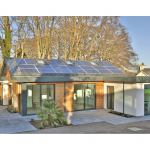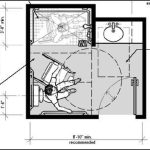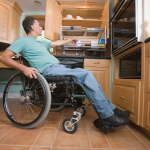Amyotrophic lateral sclerosis (ALS) is a chronic, terminal condition that affects the brain’s connection with motor neurons, gradually weakening and ceasing muscle movement.
You may have heard of Lou Gehrig’s Disease. This is the same chronic illness, named after famous baseball player Lou Gehrig, who retired from baseball after his diagnosis in 1939.
Upon your diagnosis, you will want to start planning ALS home modifications. Although the disease’s rate can be hard to predict, watching your symptoms the first year can help you gauge the rate of progression. Combining your individual prognosis with smart home design can help you manage and address ALS symptoms as they progress.
While the average life expectancy range is 2-5 years, some people live for a decade – or multiple decades, like Stephen Hawking.
Main Considerations for ALS Home Redesign
Because of ALS’s degenerative progression, many homes need to accommodate assistive equipment. This can include walkers, wheelchairs, and motorized scooters, as well as communication devices.
You also need to take into account the likely presence of a second person as caregiver. They need space, too.
We find that assistive technology greatly improves quality of life for people with ALS. For this reason, if you can transform your home to make it easier for you to use technology, we highly recommend it.
Broad Movement Changes in the House
It helps to start with how you’ll get up and down, in and out, and generally around your house.
Let’s go through the main options, depending on your home set-up.
Zero-Step Thresholds
Start by examining all the places in your house where different rooms, hallways, and doorways meet. These are likely to sport raised thresholds. They also might present small (or large) differences in floor height.
Focus on eliminating these steps. It will reduce trip hazards in the short-term. And it will make it easier to roll through the house, unobstructed, in the long-run.
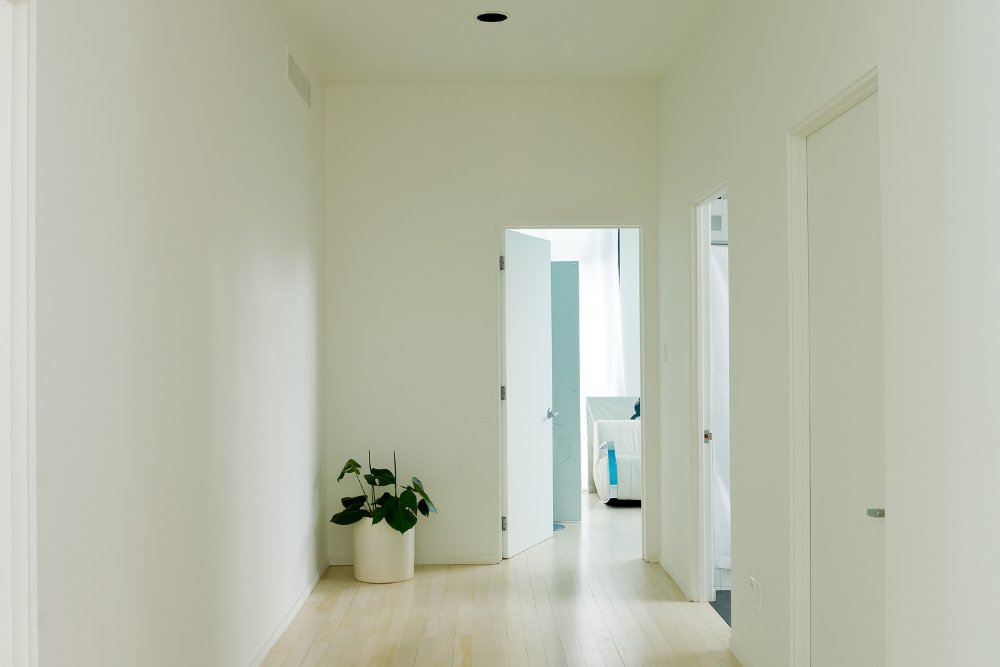
Widening Doorways
In order to accommodate power wheelchairs, most doorways will need to be widened to at least 32 inches, if not 36.
It’s worth trying swing hinges on doors that are already 28-30 inches wide – you may find the last couple inches provided workable. Pocket or sliding doors can also help create enough clearance.
But this is also an opportunity to consider installing double doors that swing open, especially if you are moving your master bedroom to the first floor. You could use doors with large-paned windows and curtains in order to feel more connected to spaces outside your bedroom.
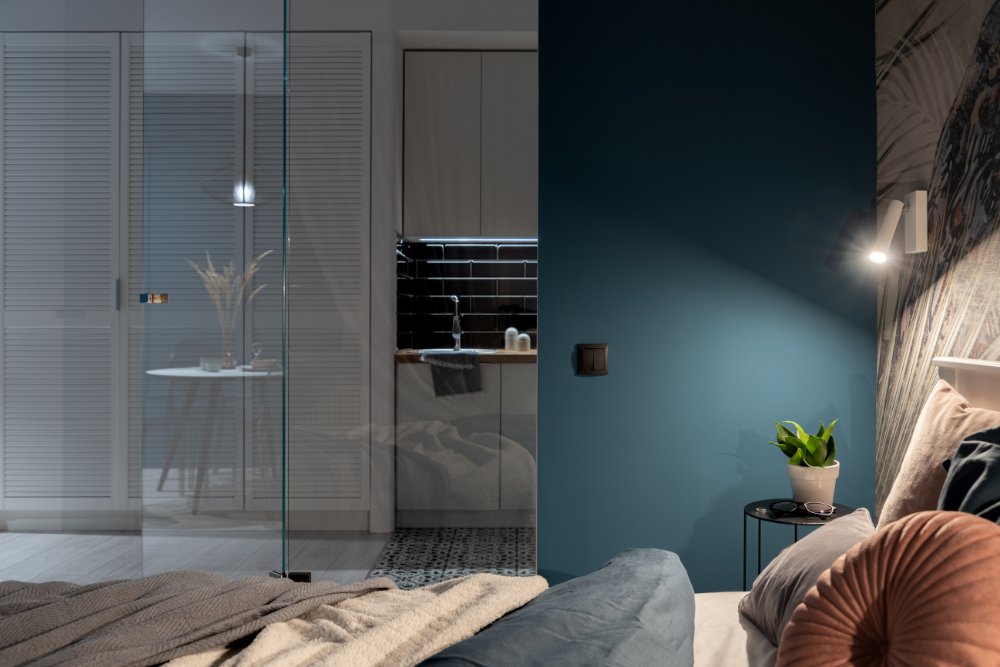
Ramps
You’ll want to consider several factors to see if your house is suitable for a ramp:
- The minimum width is 36 inches.
- Because of the minimum width, landings on either end ideally need to be able to accommodate a 5’x 5’ level surface.
- In most states, the legal steepness ratio is 1:12. For every 1 inch of height, you need 12 inches of length (this may vary based on equipment used).
- The bottom of the ramp needs to end on a level, steady surface.
- Consider the right materials for your needs. Some wooden ramps are more costly, permanent, and might reduce home value – the difference is whether or not they secure to footing in the ground. A temporary ramp can be constructed of wood, steel, or aluminum. The key is to make it above-ground if you know that you want to remove the ramp eventually.
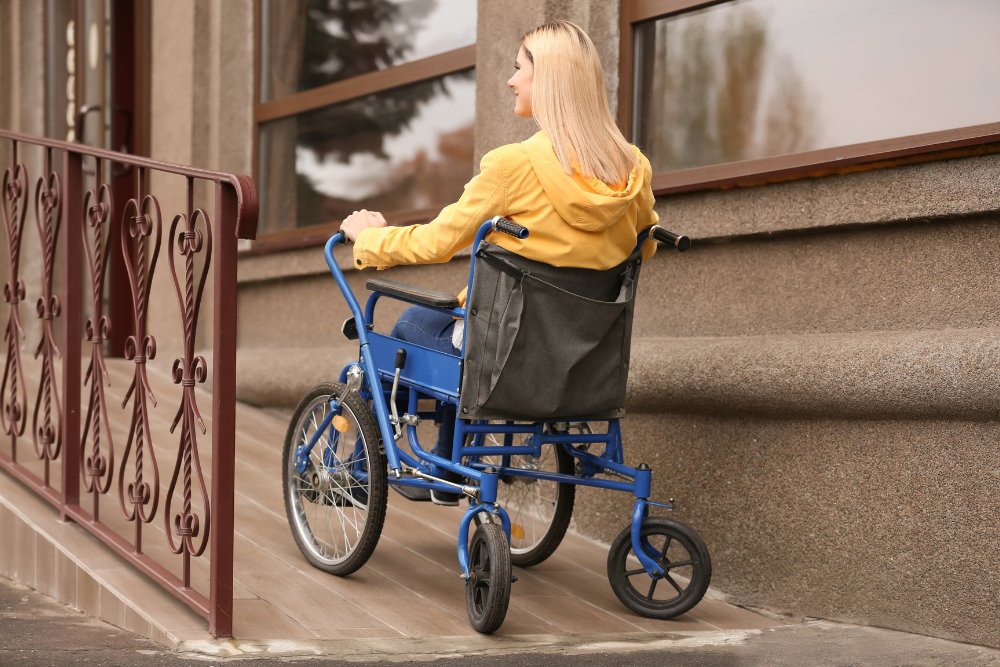
Stairlift
These metal platforms with a motorized lifting system include safety gates. They’ll travel a short distance, like up one short flight of steps.
Vertical Platform Lift
Similar to a stairlift, these travel to greater heights and often involve even more containment for the rider. They are basically an exterior elevator.
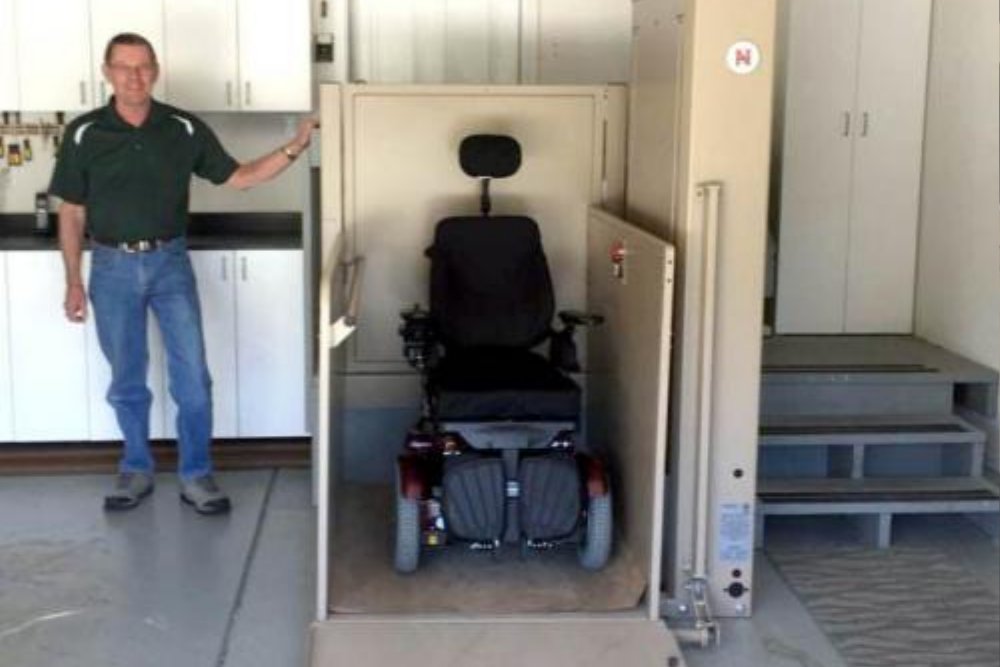
Stair Glides
These are a good option – if someone has retained trunk support. A simple seat belt system, similar to a rollercoaster, but much smoother, of course.
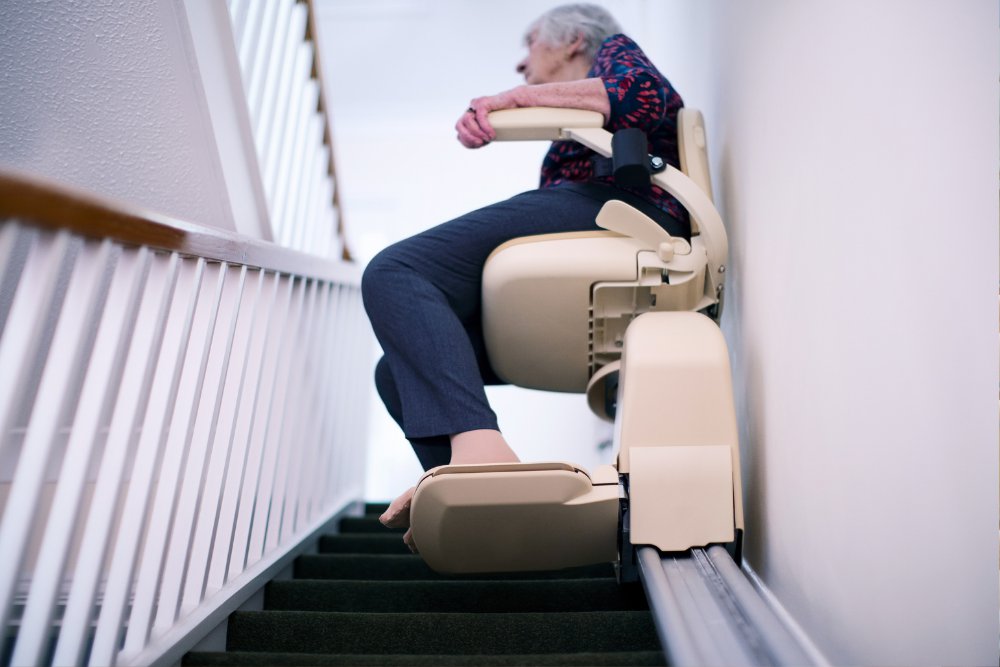
Smart Technology
Sometimes the easiest way to deal with movement challenges and fatigue is to reduce the number of steps you need to complete household to-dos. Smart technology allows us to automate many daily tasks, from turning lights on and off to changing temperature by room.
Smart technology generally falls into two categories: assistive devices and home automation. The former often makes for a minor, easy installation. They may even comprise wearable objects, like a watch, bracelet, or wristband.v

These are your Alexas, smart light bulbs, tablets, faucet/stovetop temperature controllers, and on-person motion sensors to help detect changes in balance. The goal for this assistive technology is to help the person with ALS operate independently on a day-to-day basis, compensating for limited mobility.
One consideration for voice-controlled devices: at a certain point, the person with ALS may need them to interface with voice-synthesizing software rather than their actual voice. Do some research beforehand to choose devices that are compatible with this need.
Home automation, on the other hand, takes more planning to implement. The goal often encompasses independence and safety, often through monitoring the person with ALS. The largest safety consideration is fall prevention, which becomes a greater risk as the person’s muscles weaken over time.
You may need more extensive wiring to install automated doors, appliances, and motion sensors in the home. This is where the expertise and foresight of a CAPS-certified home designer can come in handy. We’ll go into more detail in the following paragraphs.
You can also take advantage of technology for welcome entertainment when you’re in rest mode.
Power Sources
In this day and age, much of managing ALS involves technology.
For inspiration, check out this article to see how one man has outlived his life expectancy in relative independence by using, in his words, “all the technology available” to him.
In order to take advantage of smart technology, create ample opportunities to plug in. In a more modern home, simply adding power strips to several rooms might be enough.
However, it will likely be beneficial to have an electrician clarify the circuits in your home. You may not want the kitchen or laundry room, with all their heavy duty appliances, on the same circuit as your elevator, motorized wheelchair charging station, and all your automated lights, fans, thermostats, and voice-controlled ALS devices.
Some homes need circuits rewired or an extra circuit added to take pressure off the rest of the house. It can be worth it in the long-run.

Easy Ups and Downs in the Bedroom
Getting in and out of bed will be easier for you and your caregiver over time with the following ALS devices and ALS home modifications. First, however, let’s cover the long-range goal of design and home modification for ALS in the bedroom.

Make Home Design Part of Your Palliative Care Plan
You may feel some resistance to creating a palliative care plan upon diagnosis. But it’s best approached with acceptance and strategic home changes to make things easier for you, your caregiver, and your loved ones.
This will help you avoid waking up one day and realizing “I’m in over my head!” We’re here to help you think proactively about this stage.
Two often overlooked considerations are bedroom size and location. You’ll want to move into the largest bedroom on the first floor of your house.
If there are barriers to this move – only small bedrooms, difficult access to first-floor rooms, not enough rooms in the house – this is where larger home modifications come into play. This is also why you want to evaluate your ideal bedroom well before you really need it.
Why does size play a part? Because, as ALS progresses, it will behoove you to use more technology and equipment in your life. This could be something as complex as a ceiling lift system or as basic as a bedside commode. We’ll go into these below.
Technology advancements in the past few years have really improved quality of life for many people with ALS – and their caregivers. Speaking of caregivers, keep in mind that you may need space for them to sleep in the bedroom, as well. This is another reason to renovate earlier rather than later.
Consider the mental and emotional experience of your bedroom, as well. You want it to feel supportive and therapeutic for you as much as it serves purposes for your caregiver and to offset the challenges of ALS.
Small design choices can make a big difference in this arena:
- Paint the walls in a color or colors that bring you joy.
- Install large windows to let in ample natural light.
- Frame photos of family, friends, pets, and favorite artwork – there are great technology solutions for this, too.
- Create a “visitor nook” to make it easy for loved ones to visit you – kitchenette with snacks and coffee, sofa, coffee table… This can double as a rest spot for your caregiver.
- Keep communication devices nearby to stay in touch with others in the home and over longer distances: home monitors, video tablets, or just a fully charged cell phone.
- Install a stander pole near the bed – for flexible, rotational support to sit and stand.
Electric Bed
We emphasize that it may be helpful to have this kind of bed – but make it a version that you also enjoy in comfort and style.
Sometimes that just means investing in a foam top layer, soft sheets, and a truly comforting comforter. A pressure-relieving mattress can help with pain management while recumbent. You might even be able to acquire a handmade quilt for free or low-cost from a local quilting group who donates to those with medical needs.

You’ll want to make enough space around your bed to facilitate your caregiver’s ability to work from either side. You can clear space in the bedroom by moving furniture, removing inessential furnishings, or trading out horizontal-heavy pieces for more vertical storage.
For example, you could swap out a bedside table for a shelf attached to the wall. Easy reach for you, free floor space for your caregiver.
Portable or Permanent Transfer Lifts
For these systems, you install a track on the ceiling that traces common paths through the house. This can allow for easy travel from bed to bath to kitchen.
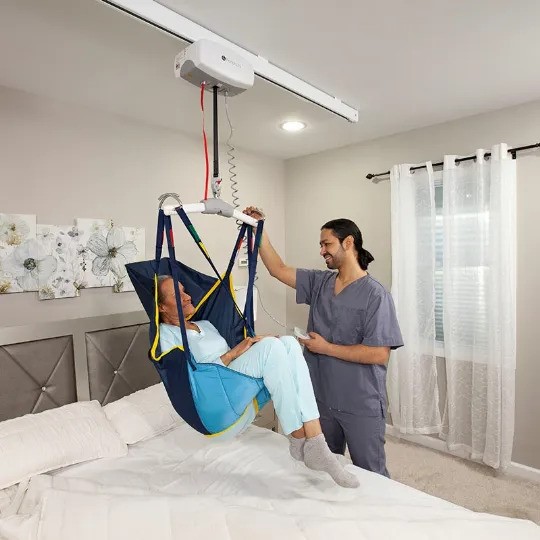
Portable lifts rely on two posts that suspend a shorter track. Sometimes this is an easier and more convenient solution for short trips, like from bed to motorized scooter.
Note these lifts make daily movement easier along the way, but they are essential for palliative care. They will keep your caregiver safe from strain. And they are useful for more than large movements throughout the house.
They can also support pain management, because they make it easy to reposition somebody with ALS, reducing soreness or pain at pressure points. Many work with remote control. This allows the person with ALS to control their movement, fostering much-desired independence.
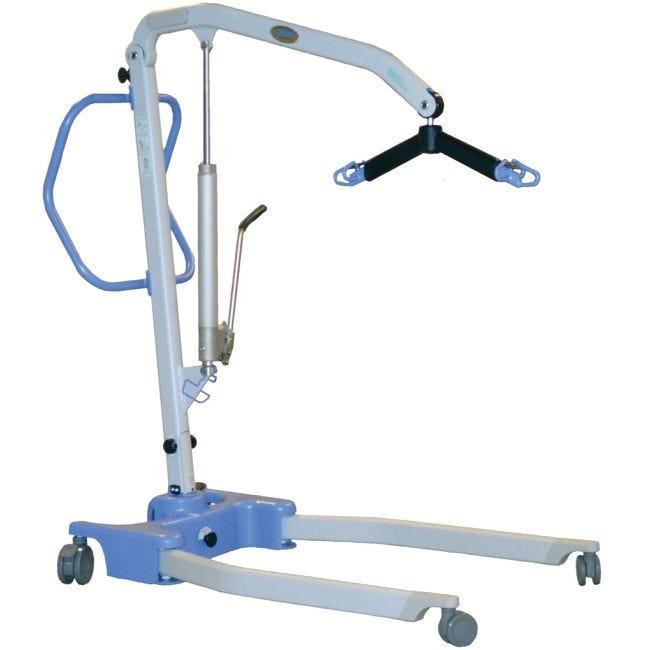
Avoiding Slips and Making Space for Caregivers in the Bathroom
Bathrooms represent many changes in height and activity. They are the major fall risk zone. For these reasons, bathrooms in particular can benefit from ALS home modifications.
But bathrooms are also often shared rooms in the house. Take care to keep modifications within a universal design framework whenever possible. This will help prevent the feeling that ALS home modifications are taking over the house.

Try out these design considerations and ALS devices for your bathroom:
- Open concept bathroom – a crowd-pleasing universal design choice that clears the way for assistive equipment.
- In a very small space, consider a European-style or “wet bathroom”.
- Bidet – users with ALS reported high QOL increase from using a bidet, because they were able to maintain much of their toilet independence. These can be button- or remote-operated.
- Elevated toilets and elongated toilet seats.
- Tasteful grab bars – or even retractable ones.
- Sliding tub transfer system. This solid track installed over the tub with a sliding seat helps your caregiver safely get you from wheelchair to bath. You can also achieve this with a ceiling lift in the bathroom.
- Therapeutic tubs – these tubs offered detailed elements that make the bath experience soothing and safe, like temperature control or aromatherapy. Many are compatible with tub transfer systems, so you’ll want to plan the installation of the two together if possible.
Sometimes it’s best to stay out of the bathroom. You may want to invest in a bedside commode, urinal, or male or female external catheter to reduce middle-of-the-night bathroom visits.
Portable showers also give you the opportunity to construct a shower where you need within any room. You’ll be able to roll right into the structure once it’s up.

Changing Your Home
Your home is a very personal space. We understand that it may feel intimidating to make so many changes to it. It can feel like ALS may be taking precedence over who you are.
For this reason, we encourage you to add personal touches to modifications whenever possible. If you can choose a color, texture, or style that you like during the product choice or renovation process, why not go for it? Remember to promote well-being by bringing the outdoors in as much as possible.
Costs of home modifications can vary widely, depending on the state of your current home and the extent of needed changes. For this reason, we advise getting in touch with one of our CAPS-certified designers to make a plan for your home.


